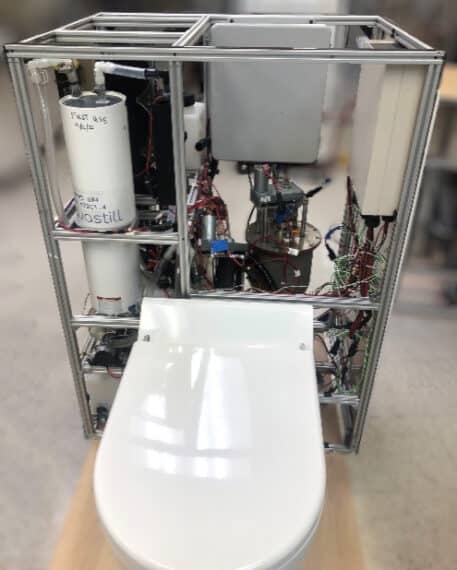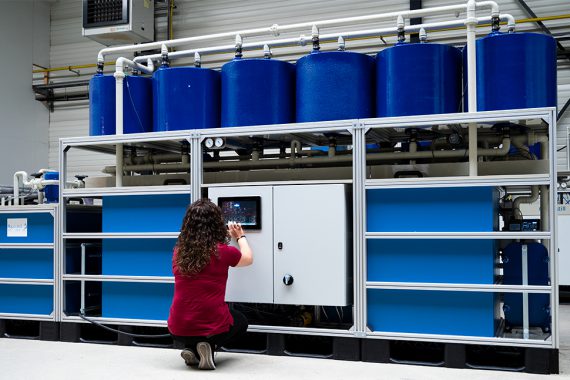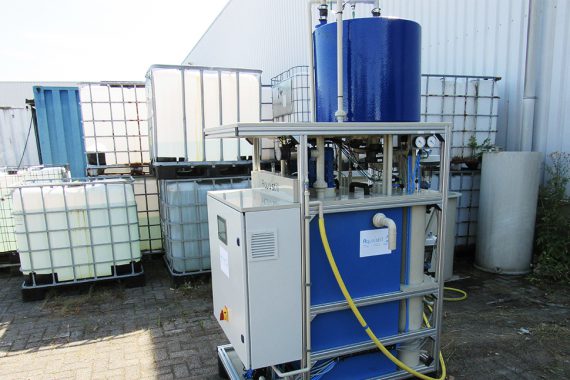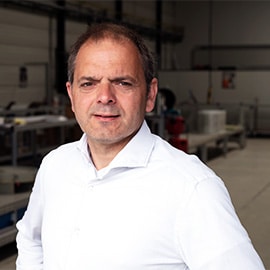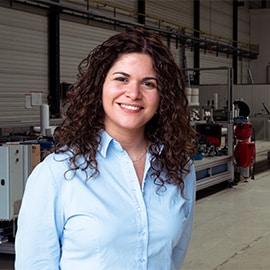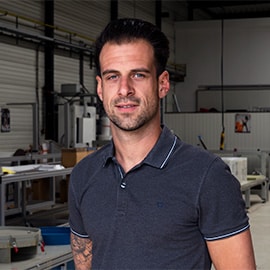Experimental characterization and optimization of multi-channel spiral wound air gap membrane distillation modules for seawater desalination
Authors: A. Ruiz-Aguirre, J.A. Andrés-Mañas, J.M. Fernández-Sevilla, G. Zaragoza
Summary: An experimental characterization of the performance of two multi-channel spiral-wound air-gap membrane distillation modules at commercial-scale was carried out for seawater desalination. The only difference between them was the membrane surface areas: 7.2 m2 and 24 m2 and thus the length of the channels (1.5 and 5 m respectively). The influence of the main operating parameters (evaporator inlet temperature, condenser inlet temperature and feed flow rate) was quantified. It was observed that the trade-off between productivity and energy efficiency was mostly related to the heat recovery inside the module. This was affected by the operation and also by the design of the modules: the longer the channel, the better the thermal efficiency but the worse the productivity. Empirical models were derived for each module. Optimum values of the three operating parameters to simultaneously maximize permeate flux and minimize specific heat consumption were obtained using surface response methodology (RSM). In the longest module it was possible to find operating conditions that maximize the productivity without losing thermal efficiency, but in the shortest module a compromise had to be found between both.
Read more
Projects
Team
sustainable heat

desalinates water
